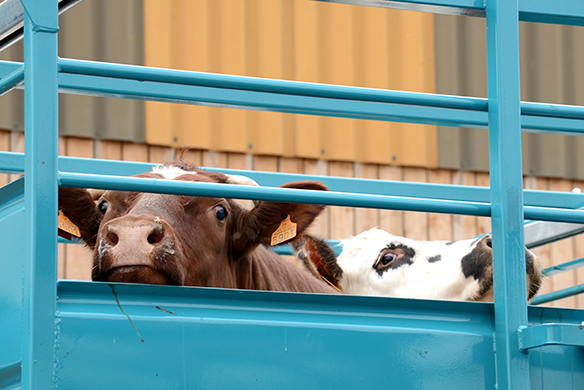Are your animals fit to load?
 PRODUCTION ADVICE - MARCH 2021 - ANIMAL WELFARE & BIOSECURITY
PRODUCTION ADVICE - MARCH 2021 - ANIMAL WELFARE & BIOSECURITY
By Linda Searle
District Veterinarian
Ph: 03 5881 9919 | M: 0427 629 740 | E: linda.searle@lls.nsw.gov.au
 Our reputation as producers of happy, healthy livestock enhances the marketability of our meat both within Australia and overseas. Not only does the consumer demand high-quality meat, free of chemicals and residues, people want to know that what they are buying comes from animals that are raised and treated humanely.
Our reputation as producers of happy, healthy livestock enhances the marketability of our meat both within Australia and overseas. Not only does the consumer demand high-quality meat, free of chemicals and residues, people want to know that what they are buying comes from animals that are raised and treated humanely.
One of the ways we achieve this is by having standards of animal welfare for the transport of livestock. This means everyone involved along the supply chain has a role in ensuring good animal welfare. This responsibility is equally applicable to every person involved along the way. This includes the farmer and farm workers, the truck driver, agent, saleyard or abattoir staff and anyone else involved in the transport of livestock.
One of the ways that the industry helps all these people meet these obligations is by providing easy-to-use tools which can be used to help establish whether an animal is in a safe state for transportation, and what to do if not.
Meat and Livestock Australia (MLA) have a handy guide ‘Is the animal fit to load?’ which is available as a pocket-sized hard copy or online at the MLA website mla.com.au/isitfittoload.
In a nutshell, the requirements are that an animal should be healthy enough that being transported won’t cause any suffering or distress.
This means:
- Being able to bear weight on all four legs
- No signs of injury or distress
- Strong enough for travel (not dehydrated or weak and skinny)
- Not blind in both eyes
- Not heavily pregnant or too young to travel
- Meets the maximum time off water standards.
If in doubt, leave it out! Animals that are not fit to load can be treated and reassessed once recovered, or you can consult a vet or consider humane euthanasia of the animal.
If you are transporting pigs, a similar pig-specific guide can be obtained from Australia Pork Limited http://australianpork.com.au/wp-content/uploads/2018/08/FFTIJ-A-Guide-Final-Document.pdf. Pigs are very susceptible to heat stress during transport. This guide includes a tool to calculate whether weather conditions are suitable for transporting pigs and provides tips on how to best manage heat stress during transport.
Ensuring your livestock are fit to load not only helps you meet your legal obligations but also supports a thriving livestock industry with huge consumer demand. We love our animals, they are our life, our passion and our livelihoods. Being extra vigilant about the health and welfare of our animals before transporting are important, not just for that individual animal, but our whole industry.